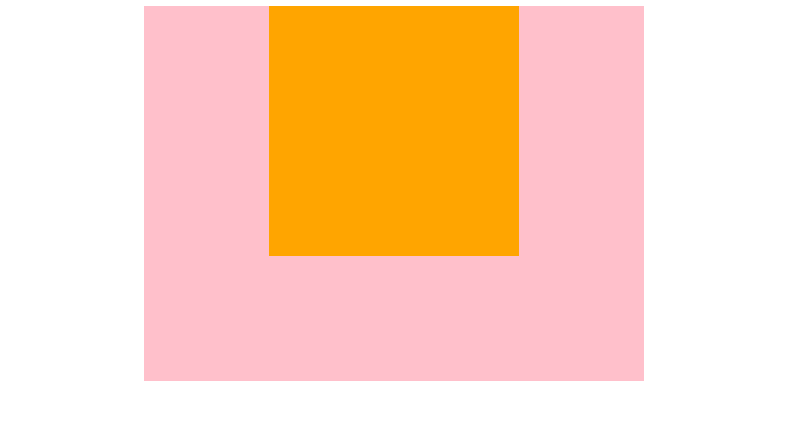本文将介绍盒子水平居中和垂直居中的几种方式!
水平居中的方法:
①给需要水平居中的元素加margin:0 auto;使得左右外边距自适应
效果图:

代码:
CSS代码,用选择器给需要水平居中的元素加(常用于盒子居中,盒子显示类型为block)
width: 200px; height: 200px; /* 用左右外边距自适应来实现水平居中 */ margin: 0 auto; background-color: orange;
②用display将需要居中的盒子转换成行内块级,然后给父元素加text-algin:center;
.box1 {
height: 300px;
width: 400px;
background-color: pink;
/* 给父元素设置text-align:center;使得子元素居中 */
text-align: center;
}
.box2 {
/* 将父元素转换成行内块级 */
display: inline-block;
width: 200px;
height: 200px;
background-color: orange;
}垂直和水平居中:
将讲解垂直和水平都居中,大家可以灵活使用,例如只需要水平的,或者只需要垂直居中的,则可以按需调整。
①手动计算(最不可取的方式,不推荐)
.box1 {
height: 400px;
width: 400px;
background-color: pink;
}
.box2 {
/* 手动计算,用父元素减去子元素的高宽,然后除二,得出距离上面和左边的距离,设置margin即可(此方法不可取) */
margin-top: 100px;
margin-left: 100px;
width: 200px;
height: 200px;
background-color: orange;
}②用定位
.box1 {
position: relative;
height: 400px;
width: 400px;
background-color: pink;
}
.box2 {
position: absolute;
top: 50%;
left: 50%;
margin-left: -100px;
margin-top: -100px;
width: 200px;
height: 200px;
background-color: orange;
}利用子绝父相。给父元素加position:relative;绝对定位,然后给子元素设置绝对定位,left和top设置50%,手动计算一下子元素高度和宽度,然后除二,分别用margin去设置负数即可(不是很推荐,下面的方法最推荐)
③定位+变形偏移效果
<!DOCTYPE html>
<html lang="en">
<head>
<meta charset="UTF-8" />
<meta http-equiv="X-UA-Compatible" content="IE=edge" />
<meta name="viewport" content="width=device-width, initial-scale=1.0" />
<title>宗波尘客-垂直和水平居中演示代码</title>
<style>
.box1 {
position: relative;
height: 400px;
width: 400px;
background-color: pink;
}
.box2 {
position: absolute;
top: 50%;
left: 50%;
transform: translate(-50%, -50%);
width: 200px;
height: 200px;
background-color: orange;
}
</style>
</head>
<body>
<div class="box1">
<div class="box2"></div>
</div>
</body>
</html>和上方的类似,但是子元素的宽度计算由transform:translate(-50%,-50%)实现自动计算,无需手动计算
关于盒子垂直水平居中注意事项:
①上方的代码中,类名为box1的是父元素,box2的是父元素里面的子元素
②由于元素涉及到脱离标准流的情况,所以每个不同的代码使用情况场景不一样,大家如果一种方式不适用有冲突,可以试另一种方式




